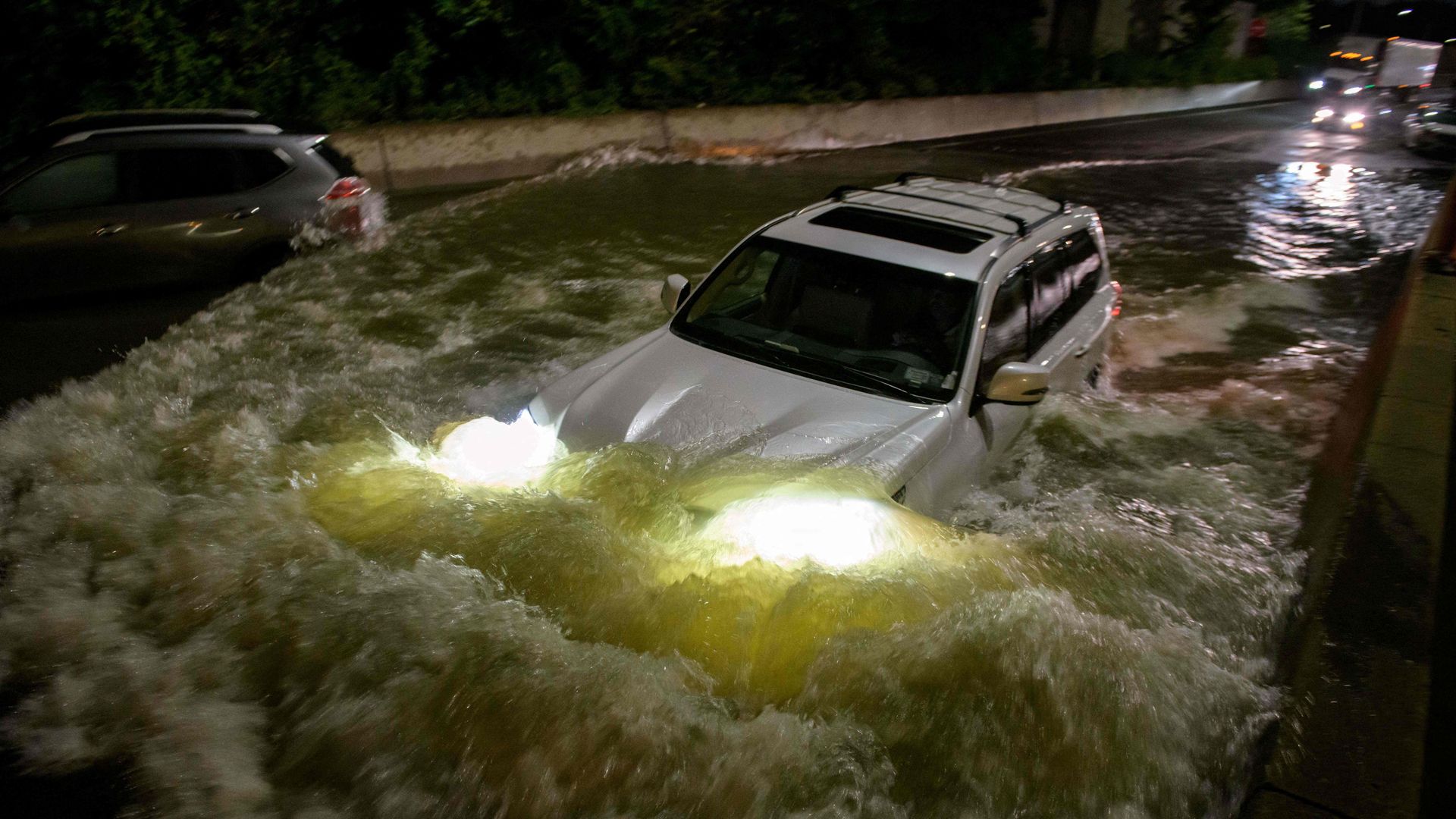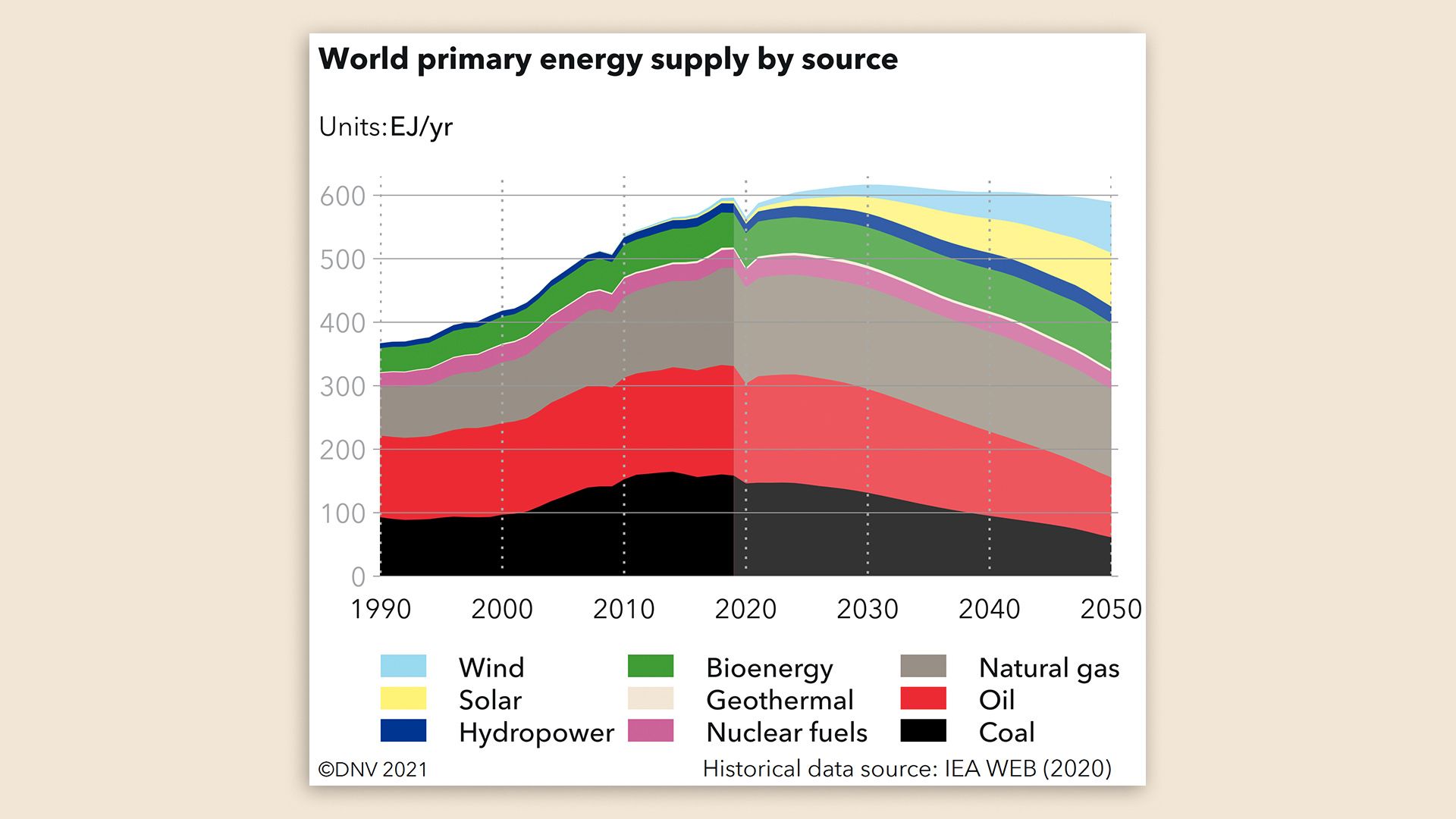| | | | | | | Presented By Cognite | | | | Axios Generate | | By Ben Geman and Andrew Freedman ·Sep 02, 2021 | | 🎉 Welcome back! Today's Smart Brevity count is 1,439 words, 5.5 minutes. 📊 Data point of the day: 6 minutes, the amount of time it took Newark, N.J., to pick up a half-inch of rain Wednesday night. 🎶 Tomorrow marks 31 years since the late George Michael released "Listen Without Prejudice, Vol. 1," which provides today's intro tune... | | | | | | 1 big thing: New York's deadly lesson |  | | | A motorist drives a car through a flooded expressway in Brooklyn, N.Y. Sep. 2, 2021 Photo: Ed Jones/AFP via Getty Images | | | | The remnants of Hurricane Ida brought a tropical deluge of unprecedented proportions to the New York City metro area on Wednesday night into Thursday, Andrew writes. Driving the news: The flooding that resulted from the heavy rainfall shut down Newark Airport, and turned city and country roads in all five boroughs and surrounding areas of New Jersey and Pennsylvania into rivers. Why it matters: The historic deluge clearly demonstrates that climate change is winning the battle between a rapidly shifting climate and outdated infrastructure. - This event may now become the prime example for U.S. efforts to better adapt to climate change.
- Studies have shown that warming air and ocean temperatures are increasing the odds and severity of heavy precipitation events and leading to changes in hurricanes that are making them more powerful and damaging.
- For every 1°C (1.8°F) increase in temperature, the atmosphere can hold 7% more moisture, which helps fuel storms like Hurricane Ida.
Where it stands: A state of emergency is in effect for New York City as at least 8 fatalities have been reported in the city and New Jersey, per the New York Times. Threat level: The National Weather Service forecast office in New York City issued its first-ever "flash flood emergency" during this event: one for northern New Jersey and one in New York City, as phenomenal rainfall rates overwhelmed drainage systems. - This is the agency's most severe type of flood warning, reserved for cases of ongoing, catastrophic flooding with the potential loss of life.
By the numbers: All-time rainfall records were shattered, with the city crushing a milestone it set just over a week ago by receiving 3.15 inches of rain in one hour at Central Park, and 5.20 inches in three hours. - Newark Liberty Airport recorded half an inch of rain in six minutes Wednesday evening. Within 23 minutes, 1.53 inches had fallen, according to an NWS meteorologist. In one hour, 3.24 inches of rain accumulated.
- The three-hour rainfall total in Central Park qualifies as a 500-year rainfall event, though the past is an increasingly poor guide to both the present and the future, as climate change is making such rare events more frequent and likely to occur, studies show.
Details: The rainfall took over the New York subway system, which is notoriously susceptible to flash flooding. Stairwells resembled waterfalls as water spilled into stations. Streets, including Queens Boulevard, were more fit for kayaks than city buses by late Wednesday night. The intrigue: Two days in advance, the National Weather Service had explicitly forecast a dangerous flash flood scenario would unfold. The bottom line: The epic deluge will stand, perhaps not for long, as the most severe in New York City history. |     | | | | | | 2. U.S.-China tensions spill into climate talks |  | | | Illustration: Rebecca Zisser/Axios | | | | Chinese officials have used special climate envoy John Kerry's visit to warn the U.S. that mutual work on climate change can't be untethered from other tensions between the two powers, Ben writes. Driving the news: "The Sino-U.S. climate change cooperation cannot be separated from the overall environment of Sino-U.S. relations," the country's foreign ministry said. The comment is part of a wider state summary of Kerry's video chat with Foreign Minister Wang Yi. The big picture: Kerry's meetings this week come at a time of deep geopolitical rifts between the U.S. and Chinese governments over trade, human rights abuses, intellectual property protection, security and more. - The Chinese government's posture shows Kerry's uphill climb to treat climate cooperation, as Kerry said in January, as a "critical standalone issue."
Why it matters: The Chinese government's comments signal the challenges to securing tangible new commitments. China is by far the world's largest greenhouse gas emitter, and the U.S. is the second-largest, and the two countries' moves on climate will play a big role in how much the world does — or doesn't — constrain warming. - Kerry's second visit to China comes ahead of a critical United Nations climate summit in Scotland this fall, where countries are hoping to jointly make progress in transforming broad emissions commitments into more tangible steps.
- China has previously pledged an emissions peak before 2030 and achieving carbon neutrality by 2060.
- But the U.S. wants faster action from the world's largest coal consumer.
Go deeper: China warns U.S. climate co-operation at risk over political tension (Reuters) |     | | | | | | 3. Where it stands: Ida's energy toll |  | | | A flooded street in Jean Lafitte, Louisiana, on Sept. 1. Photo: Brandon Bell/Getty Images | | | | Power and oil-and-gas production are starting to revive after Hurricane Ida, but there's a long way to go for Louisiana's sweltering residents and industrial damage assessments are ongoing, Ben writes. Driving the news: The Interior Department reports that roughly 80% of Gulf of Mexico crude oil production and 83% of gas production was shut-in as of yesterday. - Right before the storm, almost all Gulf output was offline as companies shut down facilities and evacuated workers.
- On the power front, roughly 902,000 homes and businesses are without power in Louisiana, per PowerOutage.us.
- The big utility Entergy said that it has restored service to over 100,000 customers thus far and yesterday restored limited power to New Orleans for the first time since the storm.
Refiners are still assessing the damage. S&P Global Platts notes that 2.1 million barrels per day of refining capacity was offline as of yesterday, but they report that should decline soon. Exxon has begun to restart its roughly 520,000 barrel per day facility in Baton Rouge. The intrigue: One question is how offshore oil-and-gas producers will grapple with damage to Port Fourchon, a key industry hub and staging area. - But S&P notes that "there are alternate routes for transportation outside Port Fourchon and Houma where helicopters can provide services."
|     | | | | | | A message from Cognite | | The countdown to 2050 has begun | | |  | | | | What are the global leaders of technology and industry doing to drive the energy transition, digitalize legacy industries, and reach net-zero by 2050? Find out at Ignite Talks, one of the world's largest industrial technology and digitalization conferences, September 21-23. Register here. | | | | | | 4. The vulnerable Gulf |  Data: U.S. Energy Atlas; Map: Thomas Oide/Axios Visuals The amount of oil and natural-gas-related infrastructure sitting in the path of Gulf of Mexico hurricanes is simply immense, Ben writes. The big picture: The chart above captures just a subset of the region's vast network of petrochemical plants, pipelines, storage terminals, processing facilities and more. The U.S. Energy Information Administration has detailed U.S. mapping tools you can take for a spin here. Why it matters: The region's energy infrastructure sits in the path of storms that are becoming increasingly powerful as the world warms. Disruptions and damage also become environmental hazards. This New York Times piece explores the potential for dangerous leaks and emissions due to Ida, and some incidents that have already been reported. |     | | | | | | 5. Filling in the blanks on post-COVID work |  | | | Illustration: Annelise Capossela/Axios | | | | A new report explores how emerging work patterns created under the pandemic's strain may create important long-term shifts in energy use, but not in ways that significantly change emissions, Ben writes. Driving the news: The latest multidecade energy outlook from the consultancy DNV provides a look at some new normals around remote labor and virtual services. "The consolidation of using remote communication and digital tools has permanently affected our ways of working and service provision, reducing transport needs in all sectors," they write. How it works: They see a long-term 5% reduction in workspace demand in developed regions including China, and half that in developing economies. - However, they estimate a "small increase" in private cars instead of public transit, and growing demand for suburban and rural homes "will counterbalance the effect of lower frequency of office working, leaving overall car use unchanged."
- "Residential energy demand in developed regions will thus increase by 4%, half of which arises from bigger dwelling sizes and half from increased requirements for heating and cooling."
The intrigue: The report also projects that new habits will crimp air travel that was initially cut in half by COVID. - But the general trend will still be sharply upward, even with long-term business travel 20% lower than under their pre-pandemic forecast.
- "By 2050, we will see annual global passenger flights growing 130% from 4.4 billion flights in 2019 to 10.2 billion flights in 2050," they note.
|     | | | | | | 6. The fossil fuel decline won't be fast enough for Paris |  | | | Image via DNV Energy Transition Outlook | | | | The wide-ranging DNV analysis finds that COVID has not been a turning point on climate, Ben writes. Why it matters: "[F]rom an energy transition perspective, the pandemic has been a lost opportunity," they write. "Recovery packages have largely focused on protecting rather than transforming existing industries." The big picture: The projection sees surging clean energy and a long-term decline in fossil fuels, but not enough to meet Paris Agreement goals. - They conclude coal use has peaked. Oil is rebounding and reaches pre-pandemic levels around 2025, but then declines to 55% of current levels by 2050.
- Natural gas will grow this decade, stay flat in the 2030s and then decline only slowly.
The bottom line: There's a "very short window to close the gap" between current trajectories and Paris, which aims to limit temperature rise to under 2°C above preindustrial levels and ideally 1.5°C. Absent stronger action, they project the increase to reach 2.3˚C by 2100 — far below worst-case outcomes, but a level slated to bring highly destructive effects. |     | | | | | | A message from Cognite | | The countdown to 2050 has begun | | |  | | | | What are the global leaders of technology and industry doing to drive the energy transition, digitalize legacy industries, and reach net-zero by 2050? Find out at Ignite Talks, one of the world's largest industrial technology and digitalization conferences, September 21-23. Register here. | | | | 🤦♂️ I malfunctioned and somehow called the Breeders the "Cannonballs" in yesterday's music intro. I'll make stronger coffee. -Ben |  | | It'll help you deliver employee communications more effectively. | | | | | | Axios thanks our partners for supporting our newsletters. If you're interested in advertising, learn more here.
Sponsorship has no influence on editorial content. Axios, 3100 Clarendon Blvd, Suite 1300, Arlington VA 22201 | | | You received this email because you signed up for newsletters from Axios.
Change your preferences or unsubscribe here. | | | Was this email forwarded to you?
Sign up now to get Axios in your inbox. | | | | Follow Axios on social media:    | | | | | |











No comments:
Post a Comment